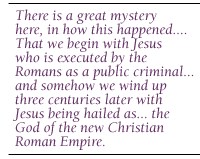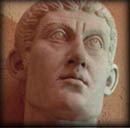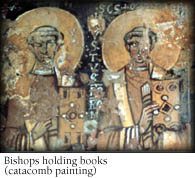?
If a person does not see things spiritually, is he not blind?
Thank you for sharing this thought. Literal and spiritual are completely different concepts. Stories that are interpreted literally or simply historically, have no real significance to an individual’s personal experience. The miraculous stories recounted in the Bible are attempts to put spiritual, 5-D experiences into human language, which will be ripe for misinterpretation. When we’re able to step away from literal interpretation and see how certain stories can apply to one’s life, we open ourselves up to new possibilities. No single religion has a monopoly on The Absolute, all have their own shades and descriptions of glimpsing eternal truths.
Every single person has their own internal compass of right and wrong, in their own heart, even if they are exposed to no religious teachings.
**********************************
Aten – Atman – The Eternal Sun in the Heart
http://goldenageofgaia.com/spiritua...spirituality/akhenaten-worshipper-sun-surely/
It seems to me quite a common view of Amenhotep, later Pharaoh Akhenaten, that he was a “worshipper of the sun.” The notion seems to have arisen because he performed a worship of the Sun in the morning.
But surely he was not a simple sun worshipper. Surely something much deeper was intended by his words and deeds, something that may have escaped us.
National Geographic quotes him as saying:
“Oh living Aten, who initiates life…. Oh, sole god, without another beside him! You create the Earth according to your wish…. You are in my heart, and there is none who knows you except your son.”
It is said that he spoke these words as the Sun rose. But was he a worshipper of the outer, physical Sun or the inner, spiritual Sun, that is ultimately God?
Oh living Aten, who initiates life.
The Upanishads, which predate Akhenaten, say that “the whole universe came forth from Brahman [God] and moves in Brahman [God]”?
Oh, sole god, without another beside him!
Sri Shankara: “Brahman alone is real. There is none but He.” Surely what Akhenaten is saying is that only God exists; there are not two, but only One. “Hear, Oh Israel, the Lord thy God. The Lord is One.”
You create the Earth according to your wish.
Says Shankara: “Brahman is the cause of the evolution of the universe, its preservation and its dissolution.”
You are in my heart.
Does He not reside in the heart of each being as the Immortal Self? Sri Krishna declares: “The Lord lives in the heart of every creature.” Or the Upanishads: “The Supreme Person, … the Innermost Self,
dwells forever in the heart of all beings.”
There is none who knows you except your son.
Where is the difference between saying that “there is none who knows you except your son” and saying, with Jesus, “no man knoweth who the Son is, but the Father; and who the Father is, but the Son.” This same Son, this Christ, this Pearl of great price and treasure buried in a field — is not this the immortal Self, the Son of God?
Akhetaten….
When Akhenaten says, “I shall make [the royal city of] Akhetaten for the Aten, my father, in this place,” is he referring to his earthly father or to his Heavenly Father, whom he revered?
The rising of the Sun….
I do not believe that Akhenaten worshipped the physical star we call the “Sun.” However, if you look at the Sun, it exactly resembles, I am told, the sight of the Self in enlightenment. It is the most obvious symbol for the experience of enlightenment of all symbols that I can think of. It itself is no appropriate thing to worship; it is a metaphor for the Self, the Prince of Peace, the Atman.
Other sages who worshipped the “sun”
Here are other examples of enlightened sages using the sun as a teaching device, as, in my opinion, Akhenaten did. They also are not “sun worshippers.”
When we hear Sri Ramakrishna, let us recall that he was talking to a circle of very precocious spiritual aspirants, unlike Akhenaten who was probably talking to people around him who understood little of what he was saying. Probably unlike Akhenaten, Sri Ramakrishna was an avatar, who descended with what he called his “merry band” of special souls.
Paramahansa Ramakrishna
As long as you live inside the house of maya, as long as there exists the cloud of maya, you do not see the effect of the Sun of Knowledge. Come outside the house of maya, … and then the Sun of Knowledge will destroy ignorance.
Bodhidharma
In the body of mortals is the indestructible buddha-nature. Like the sun, its light fills endless space. But once veiled by the dark clouds of the five shades [the five shades refers to the five bodily coverings of a mortal], it’s like a light inside a jar, hidden from view.
Sri Krishna
When the light of the Atman
Drives out our darkness
That light shines forth from us,
A sun in splendour,
The revealed Brahman.
The Upanishads
As the sun, revealer of all objects to the seer, is not harmed by the sinful eye, nor by the impurities of the objects it gazes on, so the one Self, dwelling in all, is not touched by the evils of the world. For he transcends all.
Yung-chia Ta-Shin
The Inner Light … knows no boundaries,
Yet it is ever here, within us,
Ever retaining its serenity and fullness.
There is a unity among the sayings of these enlightened sages. Are they not all describing, in different words, the same one ultimate Reality, a Reality known perhaps to Akhenaten?
I suggest that the inner Sun, the Buddha-nature, Brahman, the Supreme Self is what Akhenaten knew, just as Bodhidharma knew it, Pseudo-Dionysius, Plotinus, Apollonius of Tyana, St. Augustine, St. John of the Cross, etc. It is hidden from most men; it is seen in the experience of enlightenment.
Enlightenment and the Trinity of Levels
Akhenaten’s statements in his poem to the Sun are those we might hear from any enlightened sage we may investigate. Yes, of course, only he could communicate with the Aten. Only an enlightened individual can “know” God. Another name for “enlightenment” is “God-realization.” Those who are enlightened KNOW God.
I define enlightenment as an event in which we perceive, in a sudden discontinuity of knowledge, a spiritual reality beyond this material dimension. It could be a glimpse of one of three realities, which Christians call the Father, Son, and Holy Ghost, and Hindus Brahman, Atman, and Shakti.
Rearranging this order and using generic terms, it could be a glimpse of the Child of God (the Son, the Atman), God the Mother (Holy Spirit, Shakti), or God the Father (the Father, Brahman). These three levels have been called the Transcendent (Father), the Phenomenal (Mother), and the Transcendent in the Phenomenal (Child). Enlightenment could also be of a level of Reality beyond these three.
Enlightenment opens up communication with what Hindus call (interestingly, given Akhenaten’s use of the term Aten) the Atman, which Jesus called the Prince of peace, the Pearl of great price, the treasure buried in the field (of the body), the mustard seed, and the leaven that leavened the whole loaf.
Having seen the Light of the Christ or Atman, we put aside all desires for anything else than to fully experience it and find that meditating on it (or pursuing some other spiritual practice) makes that discrete point of brilliant light (the Child) turn into a light that suffuses all creation (the Mother) and thence to a light that utterly transcends creation (the Father). We’ve found the treasure buried in the field. We’ve sold all that we owned and have bought field and treasure.
Does any enlightened master, apart from Jesus, support this conjecture that knowing the Christ or inner sun leads to knowledge of the Father or transcendent sun? Here’s medieval mystic Jan Ruusbroec on the subject:
“In the abyss of this darkness in which the loving spirit has died to itself, God’s revelation and eternal life have their origin, for in this darkness an incomprehensible light is born and shines forth; this is the Son of God, in whom a person becomes able to see and to contemplate eternal life.
“It is Christ, the light of truth, who says, ‘See,’ and it is through him that we are able to see,for he is the light of the Father, without which there is no light in heaven or on earth.
Zoroaster called the inner sun “Fire the Son of God.” Look at the misunderstanding which surrounds him. A scholar as wise as Sir Leonard Wooley can say, misunderstanding Zoroaster’s description as many Egyptians probably did Akhenaten’s, that Zoroaster worshipped “embodied fire.” “Fire the Son of God” is not embodied fire and it’s no different from the inner sun that Akhenaten may have seen.
Here are other examples of the use of a fire metaphor to describe the inner sun, Christ, or Atman. Biblical prophets called it a “firebrand plucked from the burning” and “the fire … ever … burning upon the altar” of the heart. Modern masters have called it the “divine spark buried deep in every soul.”
Krishnamurti called it “the Star.” His description of his enlightenment is very compelling. Perhaps it may have happened to Akhenaten the same way.
“I sat crosslegged in the meditation posture. When I had sat thus for some time, I felt myself going out of my body. I saw myself [with the inner eye] sitting down with the delicate tender leaves of the tree over me.
“I was facing the east. In front of me was my body and over my head I saw the Star, bright and clear. … There was such profound calmness both in the air and within myself, the calmness of the bottom of a deep and unfathomable lake. Like the lake, I felt my physical body, with its mind and emotions, could be ruffled on the surface but nothing, nay nothing, could disturb the calmness of my soul. …
“I was supremely happy, for I had seen. Nothing could ever be the same. I have drunk at the clear and pure waters at the source of the fountain of life and my thirst was appeased. Never more could I be thirsty, never more could I be in utter darkness; I have seen the Light.
“I have touched compassion which heals all sorrow and suffering…. Love in all its glory has intoxicated my heart; my heart can never be closed. I have drunk at the fountain of Joy and eternal Beauty. I am God-intoxicated.”
It is this “incomprehensible light” which Akhenaten attempts to make known to Egyptians who do not know it. This light of the sun, seen in the first experience of enlightenment, opens up and becomes a transcendent light, in a further, more transformative experience of the Father. The Son proves to be the truth, the way, and the life – the doorway to the Father, with which it is one.
I have said that all enlightened sages know the same thing. Let me end with a quote from Sri Yukteswar Giri, on the unity of religions.
“There is an essential unity in all religions; … there is no difference in the truths inculcated by the various faiths; … there is but one method by which the world, external and internal, has evolved; and … there is but one Goal admitted by all scriptures.”
Summary
To summarize, I submit that Pharoah Akhenaten was an enlightened man, who had knowledge of the Heavenly Father through mystical insight, as did all the world’s saints and sages. He had this experience, as they all did, when the Inner sun of the Self arose, not on the earthly horizon, but on the inner horizon of the heart.
That first mystical vision led him eventually to Aten, the Father. The religion that he initiated, which was overthrown after his death, was the worship of the same Heavenly Father that all mystics and masters through eternity have reverenced.
Seeing him in this way eliminates the difficulties inherent in casting him as a mere worshipper of the Sun and restores to him his true accomplishment: he fulfilled the purpose of life — to realize God. That his contemporaries did not give him his due is unfortunate.
But, with the benefit of thousands of years of spiritual learning, we have the opportunity to set that unfortunate circumstance straight and give Akhenaten his true place in history, along with such other enlightened mystics as Solomon, Socrates, Jesus, and Buddha.
**************************************
So where is this inner sun? The Egyptians believed it was in the thymus gland, the Hindus believe it is in the Heart Chakra (the thymus gland), whose deva or angel is Isha (possibly a precursor to Issa or Yeshua?) – a higher, pure version of our material selves.
[video=youtube;J9FSv2CV6Zo]https://www.youtube.com/watch?v=J9FSv2CV6Zo[/video]
[video=youtube;MrRKicFZn7k]https://www.youtube.com/watch?v=MrRKicFZn7k[/video]








